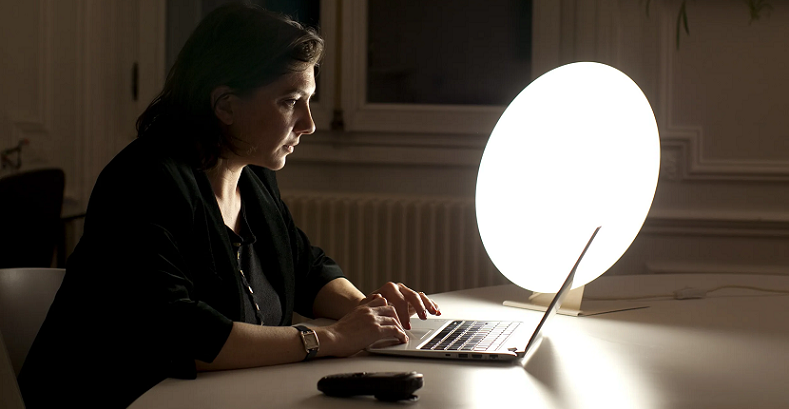
The unique daylight patterns, or photoperiods, in the Arctic and Antarctic regions influence our cognitive functions and mood states. In these parts of the world, the sun can shine incessantly for half the year during the “midnight sun” period and then disappear for the other half during the “polar night”. But how does this extraordinary light-dark cycle impact those who live under it? Here we uncover the science behind photoperiodism, shed light on life in the polar regions, and examine the cognitive and mood impacts that come with living under these unique photoperiods.
Contents
Understanding Photoperiodism
As we delve deeper into our exploration of the impacts of polar photoperiods, it is crucial to first establish a foundational understanding of photoperiodism.
Definition of Photoperiodism
Photoperiodism is a biological response to the change in proportions of light and darkness in a 24-hour cycle. This concept is significant across a wide range of species, from plants to animals, including humans, and is often associated with changes in behavior, growth, and development.
The Science Behind Photoperiodism
Photoperiodism operates on the principle that light and darkness impact the production of certain hormones in organisms. In humans, the pineal gland, a tiny organ situated in the brain, plays a key role in this process. As light decreases, this gland produces more of a hormone called melatonin, which signals to our bodies that it’s time to sleep. Conversely, as light increases, the production of melatonin decreases, signaling a time of wakefulness.
This pattern, controlled by what is known as our “circadian rhythm”, is typically in sync with the day-night cycle of our environment. However, in places with unique photoperiods like the polar regions, this pattern may be significantly disrupted, leading to various physiological and psychological responses [1].
Effects of Photoperiods on Biological Systems
Photoperiods greatly influence our biological systems and behaviors. They control not only sleep and wakefulness but also other important physiological functions such as feeding behavior, body temperature regulation, and even mood states.
Photoperiods are also known to affect the reproductive cycles of many animals, as well as seasonal activities like migration. In humans living in non-polar regions, photoperiods often subtly influence our routines and lifestyle choices. However, in polar regions, the impact of these unique photoperiods becomes much more pronounced [2].

Life in the Polar Regions
Having established the significance of photoperiodism, we now explore the polar regions—places where photoperiods are unlike anywhere else on the planet.
Description of Polar Environments
The polar regions refer to the Arctic in the north and the Antarctic in the south, encircling the Earth’s geographical poles. Characterized by their extreme cold, strong winds, and vast expanses of ice and snow, these regions present one of the most challenging environments for human habitation.
But it’s not just the cold that defines life here. The polar regions are also characterized by their unique photoperiods. In the summer months, the sun does not set for several weeks, creating a period known as the “midnight sun”. Conversely, during winter, the sun does not rise for a similar length of time, resulting in the “polar night”.
Unique Photoperiods in Polar Regions
These unique photoperiods are a result of the Earth’s axial tilt. For half of the year, during the region’s respective summer, the pole is tilted towards the sun, which results in continuous daylight—the midnight sun. In contrast, during the winter months, the pole is tilted away from the sun, leading to prolonged darkness—the polar night.
Inhabitants of these regions experience a shifting world of light and darkness. Imagine living through a summer where the sun never sets, allowing for endless activities into what should be night, only to be followed by a winter where darkness dominates and the sun is but a distant memory [3].
The Human Experience in Polar Conditions
Living under these unique photoperiods influences all aspects of life in the polar regions. From daily routines and work schedules to social activities and recreational pursuits, everything is touched by the rhythm of the polar sun and its absence.
But beyond influencing daily activities and routines, these unique photoperiods also have significant effects on the cognitive functions and mood states of individuals, leading to a distinctive psychological landscape for inhabitants of these regions.

Cognitive Impacts of Unique Photoperiods
The endless days and nights of the polar regions not only affect the daily rhythms of life, but they can also have profound impacts on cognitive function.
Influence of Light on Brain Functions
Before we delve into the specific effects, it’s important to understand that our brains are highly responsive to light. The suprachiasmatic nucleus (SCN), often referred to as the body’s ‘master clock’, governs our circadian rhythms. Located in the hypothalamus, this group of nerve cells responds to light and darkness cues to regulate various bodily functions, including sleep, hormone production, and even mood.
Light, or the lack thereof, affects the production of various hormones and neurotransmitters, such as melatonin and serotonin, that influence our sleep patterns, mood, and cognitive function. This fundamental role of light in regulating brain function is crucial when considering the cognitive impacts of the unique photoperiods experienced in polar regions [4].
Cognitive Changes Under Extreme Photoperiods
With the understanding of light’s influence on brain functions, let’s now delve into the cognitive changes that can occur under the extreme photoperiods of the polar regions.
Sleep Patterns and Alertness
In the land of the midnight sun, maintaining a regular sleep schedule can be challenging. The continuous exposure to daylight can suppress the production of melatonin, leading to disruptions in sleep patterns. Lack of quality sleep can lead to decreased alertness and cognitive performance in tasks that require attention, decision-making, and reaction time.
In contrast, during the polar night, the extended darkness can lead to excessive melatonin production. This can cause an increased need for sleep and feelings of lethargy, which could also impact cognitive performance.
Memory and Cognitive Performance
Apart from impacting sleep and alertness, extreme photoperiods can also affect memory and other cognitive functions. Research suggests that extended daylight can initially boost cognitive performance and enhance mood. However, prolonged exposure can lead to cognitive fatigue. Conversely, extended darkness during the polar night can lead to a decline in cognitive performance over time.
Comparative Studies on Cognitive Impact of Unique Photoperiods
To illustrate these effects, several comparative studies have been conducted on individuals living in polar regions versus those living in regions with more regular day-night cycles. These studies generally show significant differences in cognitive performance between the two groups, especially in tasks involving attention, memory, and decision-making. However, individual responses can vary greatly, and more research is needed to fully understand these cognitive impacts [5].

Mood Impacts of Unique Photoperiods
After examining the cognitive impacts, let’s now shift our focus to the emotional sphere. The unusual daylight patterns in polar regions can profoundly influence our mood and overall mental health. In this section, we’ll explore the relationship between light exposure, mood regulation, and the manifestation of mood disorders associated with unique photoperiods.
Light Exposure and Mood Regulation
Similar to its effects on cognitive function, light also plays a crucial role in mood regulation. It influences the production of serotonin, a neurotransmitter responsible for maintaining mood balance. An imbalance in serotonin levels can lead to mood swings and has been linked to depression.
In the polar regions, the continuous daylight during the midnight sun period can initially boost mood and energy levels. However, as this period prolongs, it can lead to a decline in mood and increased irritability. On the flip side, the long polar night’s extended darkness can lead to low mood, lethargy, and in some cases, depressive symptoms.
Mood Disorders Associated with Unique Photoperiods
Given the extremes of light and darkness, it’s perhaps not surprising that residents of polar regions can experience mood disorders associated with these unique photoperiods.
Seasonal Affective Disorder (SAD)
Seasonal Affective Disorder (SAD) is a type of depression that’s related to changes in seasons. It typically begins and ends at about the same times every year, with symptoms starting in the fall and continuing into the winter months. SAD is more prevalent in polar regions due to the extended periods of darkness during the polar night.
Other Mood Fluctuations
Even outside of diagnosable disorders like SAD, people living in polar regions can experience significant mood fluctuations due to the unique photoperiods. Feelings of restlessness and insomnia during the midnight sun, followed by lethargy and low mood during the polar night, can be common.
Research Evidence on Mood Impacts of Polar Photoperiods
Several studies have investigated these mood impacts, showing a higher prevalence of mood disorders in polar regions compared to areas with more regular day-night cycles. However, just like with cognitive impacts, individual responses can vary widely, and more research is needed to fully understand these effects.
Understanding these mood impacts is not only crucial for improving mental health in polar regions but also provides insights into the broader relationship between our environment and mental health [6].
Coping Mechanisms and Treatments
As we’ve seen, living in polar regions can bring about significant cognitive and mood changes. However, humans have a remarkable ability to adapt to their environments, and polar inhabitants are no different.
Adjustment to Polar Photoperiods: Individual Strategies
When it comes to coping with the extreme photoperiods of the polar regions, one of the most basic strategies is simple lifestyle adjustment. This can involve modifying sleep schedules, creating artificial darkness or light at appropriate times, and planning activities to align with the light conditions. For example, during the polar night, individuals may choose to pursue indoor activities that require less light, such as reading, writing, or indoor exercise.
Keeping a regular sleep schedule, despite the unusual light conditions, is another crucial strategy. This can involve using eye masks to block out the midnight sun or using light therapy lamps to mimic daylight during the polar night. Regular exercise, a healthy diet, and maintaining social connections are also important for supporting overall cognitive and mental health.
Medical and Psychological Interventions
Beyond lifestyle adjustments, there are various medical and psychological interventions available to help manage the cognitive and mood impacts of polar photoperiods.
Light Therapy
Light therapy, also known as phototherapy, is one of the primary treatments used for Seasonal Affective Disorder (SAD) and other mood disorders related to light exposure. It involves exposure to a lightbox that emits a bright light mimicking natural outdoor light. This treatment can help regulate the body’s internal biological clock and improve mood and energy levels.
Medication and Cognitive Behavioral Therapy (CBT)
In some cases, medication may be recommended to help manage mood disorders related to extreme photoperiods. Antidepressants, particularly those that help increase serotonin levels, can be effective.
Cognitive Behavioral Therapy (CBT) has also been adapted for those with SAD, known as CBT-SAD. It focuses on identifying negative thought patterns and behaviors related to the disorder and replacing them with more positive ones. This type of therapy can be a valuable tool in managing the impacts of unique photoperiods on mood.
Promoting Mental Health and Wellness in Polar Regions
Promoting mental health and wellness in polar regions requires a comprehensive approach that includes both individual strategies and wider community and healthcare initiatives. This can involve offering educational programs about the potential cognitive and mood impacts of living in these regions, increasing access to mental health services, and implementing policies to support mental health and wellbeing.
References
[1] Polar day syndrome
[2] Photoperiodic induction without light-mediated circadian entrainment in a High Arctic
[3] From polar night to midnight sun: photoperiod, seal predation, and the diel vertical migrations
[4] Birth Seasonality, Photoperiod, and Social Change in the Central Canadian Arctic
[5] Freezer on, lights off! Environmental effects on activity rhythms
[6] What time is it? The Arctic charr’s inner clock meets the midnight sun

